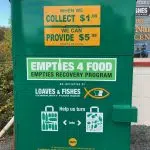
Federal department questioned quality of 2021 Indigenous census data, documents show
OTTAWA — Federal officials questioned the quality of the 2021 census data for Indigenous communities after collection efforts were hampered by factors including the discovery of unmarked residential school graves, documents show.
Briefing notes obtained by The Canadian Press through access-to-information legislation reveal Statistics Canada’s struggle to survey more than 600 First Nation and Inuit communities.
The documents were prepared for Indigenous Services Canada — the department that funds housing on reserves, along with other infrastructure and social programs.
Last October, weeks after the nearly five-month census window closed on Sept. 24, officials provided an update to the department’s deputy minister. It noted while the overall response rate was 98 per cent, it was only around 85 per cent for Indigenous communities.


